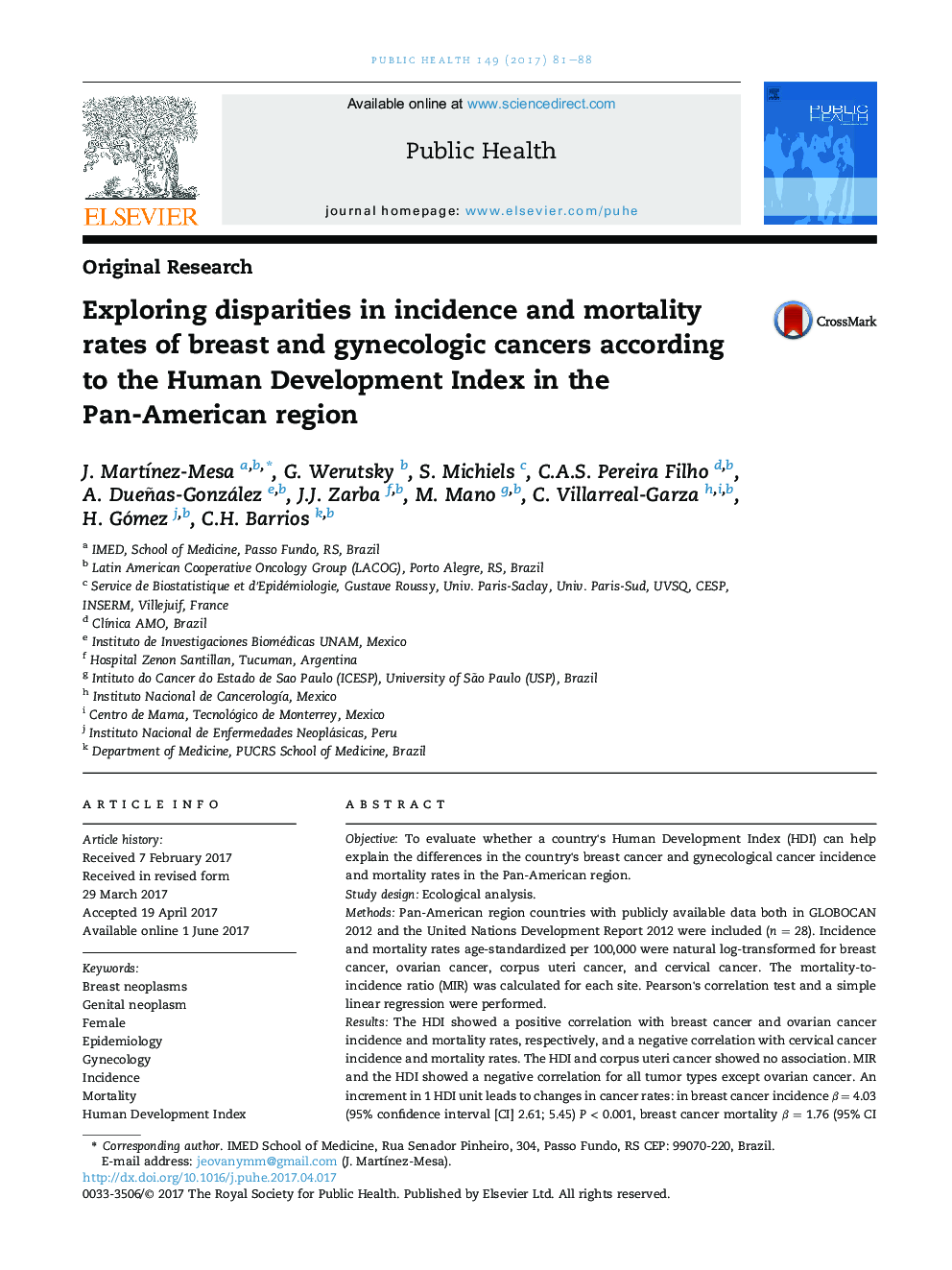| کد مقاله | کد نشریه | سال انتشار | مقاله انگلیسی | نسخه تمام متن |
|---|---|---|---|---|
| 5122872 | 1487194 | 2017 | 8 صفحه PDF | دانلود رایگان |
- Differences in a country's Human Development Index (HDI) could explain inequities in breast cancer and gynecological cancer incidence and mortality rates.
- An increment in one HDI unit leads to increments in breast cancer and ovarian cancer incidence and mortality rates.
- An increment in one HDI unit leads to a decrease in cervical cancer incidence and mortality rates.
ObjectiveTo evaluate whether a country's Human Development Index (HDI) can help explain the differences in the country's breast cancer and gynecological cancer incidence and mortality rates in the Pan-American region.Study designEcological analysis.MethodsPan-American region countries with publicly available data both in GLOBOCAN 2012 and the United Nations Development Report 2012 were included (n = 28). Incidence and mortality rates age-standardized per 100,000 were natural log-transformed for breast cancer, ovarian cancer, corpus uteri cancer, and cervical cancer. The mortality-to-incidence ratio (MIR) was calculated for each site. Pearson's correlation test and a simple linear regression were performed.ResultsThe HDI showed a positive correlation with breast cancer and ovarian cancer incidence and mortality rates, respectively, and a negative correlation with cervical cancer incidence and mortality rates. The HDI and corpus uteri cancer showed no association. MIR and the HDI showed a negative correlation for all tumor types except ovarian cancer. An increment in 1 HDI unit leads to changes in cancer rates: in breast cancer incidence β = 4.03 (95% confidence interval [CI] 2.61; 5.45) P < 0.001, breast cancer mortality β = 1.76 (95% CI 0.32; 3.21) P = 0.019, and breast cancer-MIR β = â0.705 (95% CI 0.704; 0.706) P < 0.001; in cervical cancer incidence β = â3.28 (95% CI â4.78; â1.78) P < 0.001, cervical cancer mortality β = â4.63 (95% CI â6.10; â3.17) P < 0.001, and cervical cancer-MIR β = â1.35 (95% CI â1.83; â0.87) P < 0.001; in ovarian cancer incidence β = 3.26 (95% CI 1.78; 4.75) P < 0.001, ovarian cancer mortality β = 1.82 (95% CI 0.44; 3.20) P = 0.012, and ovarian cancer-MIR β = 5.10 (95% CI 3.22; 6.97) P < 0.001; in corpus uteri cancer incidence β = 2.37 (95% CI â0.33; 5.06) P = 0.83, corpus uteri cancer mortality β = 0.68 (95% CI â2.68; 2.82) P = 0.96, and corpus uteri cancer-MIR β = â2.30 (95% CI â3.19; â1.40) P < 0.001.ConclusionsA country's HDI should be considered to understand disparities in breast cancer and gynecological cancer in the Pan-American region.
Journal: Public Health - Volume 149, August 2017, Pages 81-88
